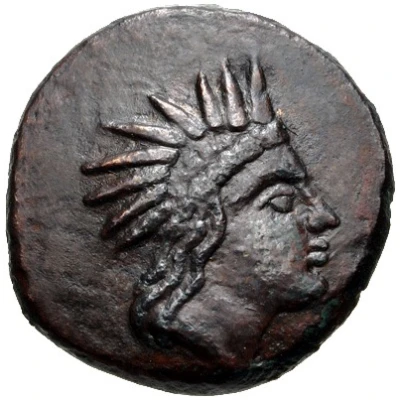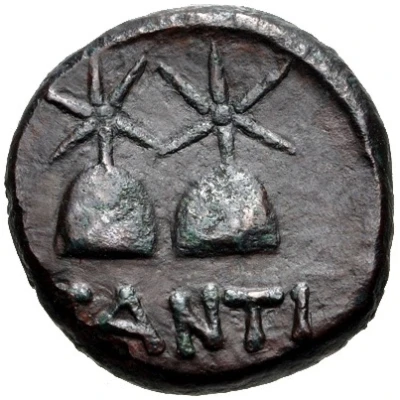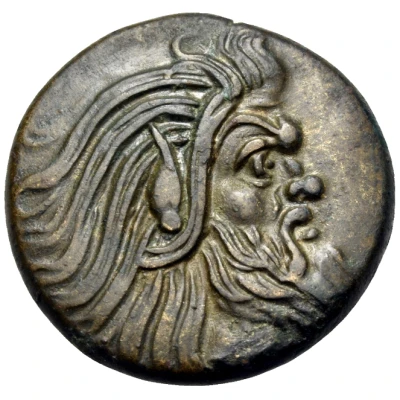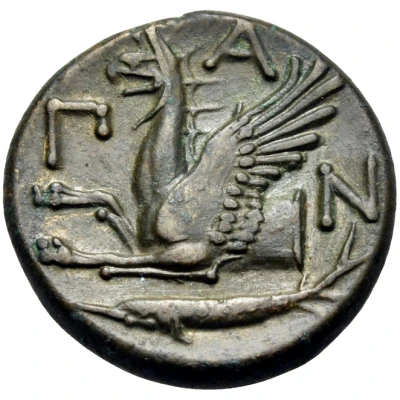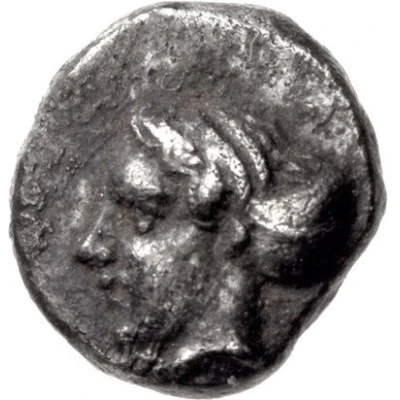
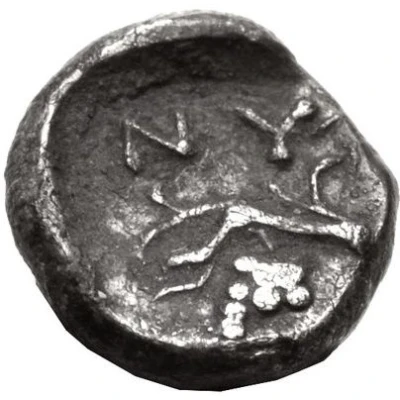

© Classical Numismatic Group, Inc.
Hemiobol Nymphaeum 425 BC - 395 BC
| Silver | 0.36 g | 6 mm |
| Issuer | Bosporan Kingdom (Bosporos) |
|---|---|
| Type | Standard circulation coin |
| Years | 425 BC - 395 BC |
| Value | Hemiobol (1⁄12) |
| Currency | Drachm |
| Composition | Silver |
| Weight | 0.36 g |
| Diameter | 6 mm |
| Shape | Round (irregular) |
| Technique | Hammered, Incuse |
| Orientation | Variable alignment ↺ |
| Demonetized | Yes |
| Updated | 2024-10-09 |
| Numista | N#427549 |
|---|---|
| Rarity index | 100% |
Reverse
Grape bunch on vine within incuse square.
Script: Greek
Lettering: NYN
Comment
Anokhin (1986) 63; Frolova, frühe, Type I, 6–8; SNG Stancomb –.
Only 16 examples cited by Frolova (not including the Pushkin piece), 12 of which are in public collections.
Interesting fact
The Hemiobol (Nymphaeum) coin from the Bosporan Kingdom (Bosporos) is interesting because it features a unique design, with the image of a nymph on one side and a grapevine on the other. This design reflects the kingdom's cultural and economic ties to ancient Greece, as nymphs and grapevines were common motifs in Greek art and mythology. Additionally, the use of silver in the coin's production indicates the kingdom's wealth and economic influence in the region.
